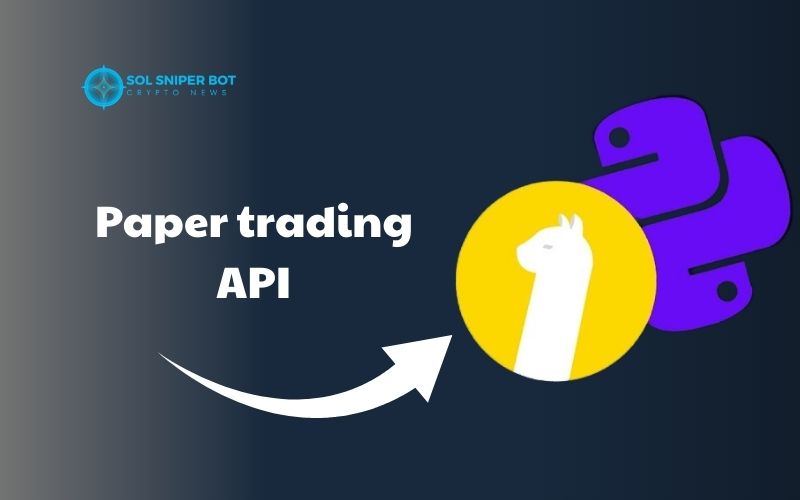In the highly volatile financial market, the paper trading API has become an essential tool for investors to test strategies and optimize profits before committing real funds. This article will guide you on how to make the most of this tool to improve your trading skills, refine your strategies and prepare effectively for the real market.
Contents
Overview of paper trading API

Paper trading API is a tool that allows traders to simulate the buying and selling of assets without using real money. Through this platform, users can access real time market data and execute virtual orders as if in a live trading environment. A key advantage is its ability to integrate with trading platforms or custom built systems, offering maximum flexibility in strategy testing. It also supports tracking results, allowing traders to adjust their strategies accurately. This solution is ideal for testing before applying strategies in the real market.
In a simulated environment, users can access various asset classes such as stocks, cryptocurrencies, forex or futures. This is especially suitable for beginners, helping them practice trading skills without financial risk. Moreover, experienced traders can use it to validate new strategies or test algorithm performance. This tool serves as a safe launchpad to enhance knowledge and build confidence when entering the real market. It’s a necessary first step for a successful investment journey.
How to choose the right paper trading API
To make the most of a paper trading API, selecting the right platform is a crucial first step. A quality API should provide real-time market data to ensure accurate simulation of actual trading conditions. Additionally, a user friendly interface and easy integration with languages like Python, JavaScript, or C++ will make testing smoother. Platforms such as Alpaca, Interactive Brokers, and Binance are widely trusted for their flexibility and API stability.
When evaluating a paper trading, consider factors like usage fees, data latency and the range of supported assets. A good API should offer fast response times, allowing you to test strategies with high precision. Supporting multiple asset types, such as stocks, crypto, and futures, can broaden your testing scope. These features directly affect how realistic and effective your strategy simulations will be.
Finally, make sure the API you choose includes detailed documentation and has an active support community. Well written documentation will shorten the setup time and help reduce integration errors. Moreover, an engaged developer community can provide examples, insights, and useful tools to speed up your development. A reliable API is not only useful for simulation but also serves as a solid foundation when transitioning to live trading.
Guide to integrating paper trading API into your application
Integrating a paper trading API into your application is the first step to simulate and test trading strategies without risking real capital. First, you need to choose a reliable platform that provides a paper trading, such as Alpaca or Interactive Brokers. After creating an account, you will receive an API key along with detailed documentation. This information is essential for setting up a connection between your application and the simulated trading system. Choosing the right platform will ensure smooth and stable integration.
Next, you need to integrate the API code into your trading application. For those using Python, you can use libraries like alpaca-trade api to execute virtual buy and sell orders. Properly connecting the required parameters such as the API key, secret key, and endpoint will ensure accurate and synchronized data. Once the connection is established, you can send simulated trade orders just like real trades on the market. This is an ideal environment for testing strategies without any financial risk.
Finally, after executing the simulated trades, analyze the feedback data to optimize your strategy. The paper trading API provides detailed reports and trade results, helping you assess the performance of each strategy. Based on this data, you can adjust entry points, exit points, or trade volumes to align with your profit goals and risk tolerance. This testing process is a solid foundation before applying the strategy in real market conditions.
Optimizing strategy when using paper trading API

One of the optimal strategies when using a paper trading API is scenario simulation. This allows traders to test multiple strategies simultaneously on separate demo accounts, enabling them to compare the effectiveness of each strategy under different market conditions. Scenario simulation helps traders make more informed decisions when entering real trades, as they have already tested various approaches beforehand. Running multiple strategies in parallel minimizes risks and maximizes the chances of success.
System latency testing is a crucial factor in optimizing trading strategies. By measuring the time from when a trade signal is generated to when the order is executed, traders can assess latency and adjust their strategies to match real-time execution speeds. This testing helps identify latency issues in the system and improves trading performance. The latency testing process ensures that traders can ensure their strategies will work efficiently in live trading environments.
Combining historical price data is a powerful strategy for evaluating the effectiveness of strategies under past market conditions. Using historical data in back testing allows traders to assess their strategies more accurately, leading to better decision making in live trading. Analyzing historical data helps identify trends and price patterns, which can then be used to optimize trading strategies, reducing risks and increasing the chances of success.
Why should you use paper trading API?
Paper trading API is a powerful tool for traders, allowing them to simulate trades without the risk of using real money. One of the main reasons to use this tool is its ability to test and optimize trading strategies before executing actual trades. Instead of risking capital in a volatile market, traders can experiment with different strategies in a safe environment, giving them a clearer perspective on their investment decisions. This also helps boost confidence when transitioning to real trading.
Another advantage of using this tool is the ability to simulate diverse market scenarios. In this way, traders can assess the effectiveness of their strategies under various market conditions, helping them find the most optimal approach. Testing strategies on demo accounts allows traders to identify and address weaknesses in their strategies before applying them in live trades. This simulation not only minimizes risk but also helps optimize the chances of success in future trades.
Using Paper trading API offers many practical benefits, from testing strategies without facing financial risk to optimizing trading decisions. Be sure to follow Sol Sniper Bot for the latest insights and updates.
